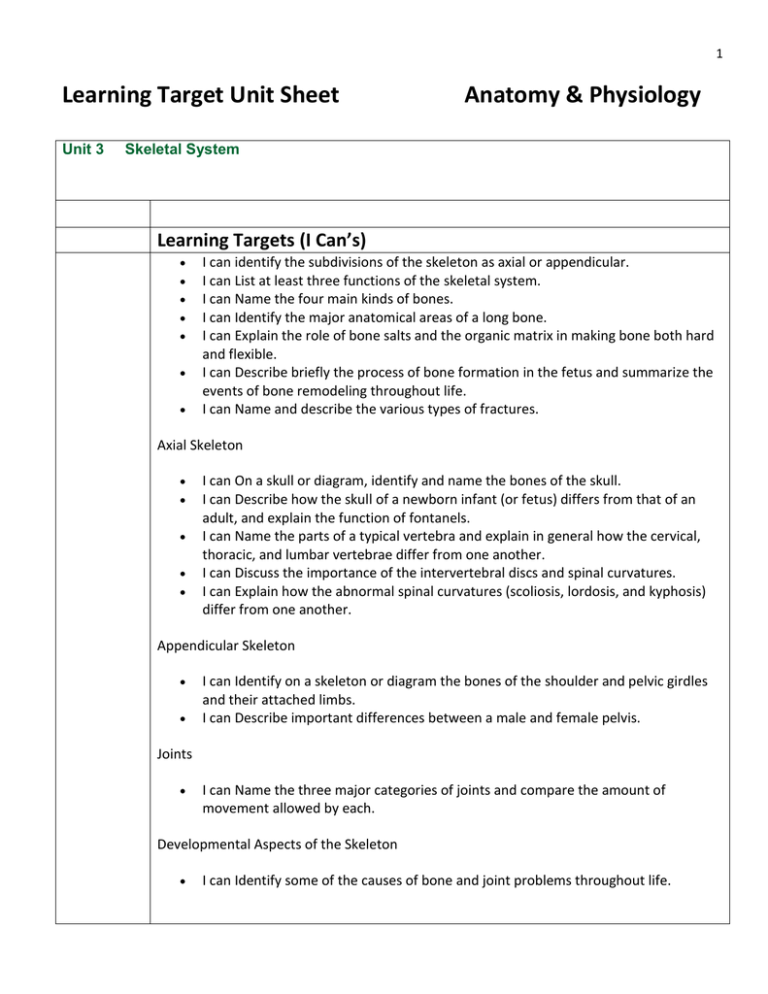Unit 3- Skeletal
advertisement

1 Learning Target Unit Sheet Unit 3 Anatomy & Physiology Skeletal System Learning Targets (I Can’s) I can identify the subdivisions of the skeleton as axial or appendicular. I can List at least three functions of the skeletal system. I can Name the four main kinds of bones. I can Identify the major anatomical areas of a long bone. I can Explain the role of bone salts and the organic matrix in making bone both hard and flexible. I can Describe briefly the process of bone formation in the fetus and summarize the events of bone remodeling throughout life. I can Name and describe the various types of fractures. Axial Skeleton I can On a skull or diagram, identify and name the bones of the skull. I can Describe how the skull of a newborn infant (or fetus) differs from that of an adult, and explain the function of fontanels. I can Name the parts of a typical vertebra and explain in general how the cervical, thoracic, and lumbar vertebrae differ from one another. I can Discuss the importance of the intervertebral discs and spinal curvatures. I can Explain how the abnormal spinal curvatures (scoliosis, lordosis, and kyphosis) differ from one another. Appendicular Skeleton I can Identify on a skeleton or diagram the bones of the shoulder and pelvic girdles and their attached limbs. I can Describe important differences between a male and female pelvis. Joints I can Name the three major categories of joints and compare the amount of movement allowed by each. Developmental Aspects of the Skeleton I can Identify some of the causes of bone and joint problems throughout life. 2 Activities/Labs Activity: Microscopic Structure of Compact Bone Activity: Common Types of Fractures Activity: Facial Bones Activity: Typical Vertebra Activity: Classification of Bones Activity: Types of Synovial Joints Activity: Case Study: Bone Identification Webquest At the Clinic Quiz: Appendicular Skeleton At the Clinic Quiz: Articulations




